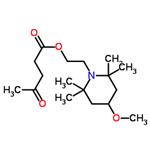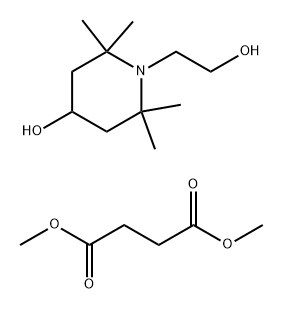Light Stabilizer 622: Detection Methods in Polymers and Its Role in UV/Heat Protection
Light Stabilizer 622, also known as HALS 622, is a high-performance Hindered Amine Light Stabilizer (HALS) used to protect plastics and polymers from degradation caused by prolonged exposure to ultraviolet (UV) light. It is designed to meet high performance and durability requirements of all powder coatings as well as adhesives and sealants applications. It protects coatings from surface defects such as gloss reduction, cracking and chalking and ensures the retention of mechanical properties. Furthermore Light Stabilizer 622 shows thermally stabilizing, good long term performance, as well as non-migrating and antioxidant properties.

A novel method for the direct detection of light stabilizer 622 in polymer additives
Plastic products can be subjected to the influence of different environmental factors (e.g., light, heat, radiation and humidity), therefore, their stability has to be improved by using some additives like light stabilizers. Light stabilizer 622, as one of the hindered amine light stabilizers, has excellent anti-light properties, and is widely used in plastic products such as polyethylene, polystyrene and polypropylene. Its purpose is to effectively protect plastic products from light- and heat-induced degradation and thus prolong their service life. In order to meet the current market demand for polymer additives, the light stabilizer Tinuvin 622 is often blended with antioxidants or antistatic agents to produce multifunctional additives that enhance the performance of various polyolefin. Therefore, the development of detection methods for various additives including Light stabilizer 622 is of great significance for the quality control and modification of plastic products as well as for environmental safety. Tinuvin 622 is an organic oligomeric light stabilizer with a weight-average molecular weight of about 3000–4000. At present, the commonly used analytical methods for Tinuvin 622 are chromatography and mass spectrometry. However, these methods are difficult to directly or accurately identify and quantify Light stabilizer 622, and simultaneously to obtain its molecular weight and molecular weight distribution information.[1]
Because of the coexistence of other potential interferents such as antioxidants and antistatic agents in the samples, it was necessary to choose a suitable column for separation of the analyte (Light stabilizer 622) and the interferents. We investigated the effects of three different tandem chromatographic columns on the separation of Tinuvin 622 in the samples. Light stabilizer 622 displays a trailing peak, which may be due to the fact that the dead volume is increased by using three gel columns in tandem at the same time, resulting in the solute diffusion and thus the prolonged separation time. Notably, when the linear +100 Å columns are used in tandem, Light stabilizer 622 is well separated from the matrix, and there is no significant trailing of Tinuvin 622. The method is simple, rapid and accurate. Importantly, compared with other existing analytical methods, the single peak shape of the light stabilizer Tinuvin 622 in our method greatly simplifies the qualitative and quantitative analysis, and our approach simultaneously solves the problem of determining the molecular weight and distribution. The proposed method has been successfully applied to the analysis of polymer additive samples containing Light stabilizer 622, which provides a new analytical tool for quality monitoring of polymer additives and has important practical application value.
Determination of a polymeric hindered amine light stabilizer in polypropylene
A polymeric hindered amine light stabilizer (HALS), Light stabilizer 622, in PP materials formulated with a magnesium hydroxide flame retardant was determined by reactive thermal desorption (RTD) gas chromatography (GC). Two kinds of the HALS components that were formed through the RTD in the presence of tetramethylammonium hydroxide [(CH3)4NOH, TMAH] were clearly observed in the chromatograms of the PP samples, with negligible interference from the other additives and the PP substrate. Here, the coexisting flame retardant was proved to affect significantly the RTD process of the occluded HALS. In conclusion, our research revealed that the apparent recovery of the polymeric HALS, Light stabilizer 622, from the PP composite samples in the RTD-GC measurement was strongly affected by the presence of the Mg(OH)z flame retardant. Even for such PP materials, the RTD-GC method was proved to be useful for the rapid and precise determination of the polymeric HALS occluded in the PP samples with a constant amount of the flame retardant.[2]
References
[1]Ma B, Shi Y, Jiang N, Yang Y, Yang Y, Qian C, Liu N, Wang W, Liu R. A novel method for the direct detection of light stabilizer Tinuvin 622 in polymer additives by gel permeation chromatography combined with multi-angle laser light scattering. Talanta. 2023 Feb 1;253:123896. doi: 10.1016/j.talanta.2022.123896. Epub 2022 Aug 30. PMID: 36103749.
[2]Taguchi Y, Ishida Y, Ohtani H, Bekku H, Sera M. Determination of a polymeric hindered amine light stabilizer in polypropylene formulated with magnesium hydroxide flame retardant by reactive thermal desorption-gas chromatography. Anal Sci. 2004 Mar;20(3):495-9. doi: 10.2116/analsci.20.495. PMID: 15068294.
See also
Lastest Price from Light Stabilizer 622 manufacturers

US $2.20-8.80/KG2025-07-08
- CAS:
- 65447-77-0
- Min. Order:
- 1KG
- Purity:
- 99%
- Supply Ability:
- g-kg-tons

US $0.00/Kg/Drum2025-04-21
- CAS:
- 65447-77-0
- Min. Order:
- 1KG
- Purity:
- 99%min
- Supply Ability:
- 1000kg


